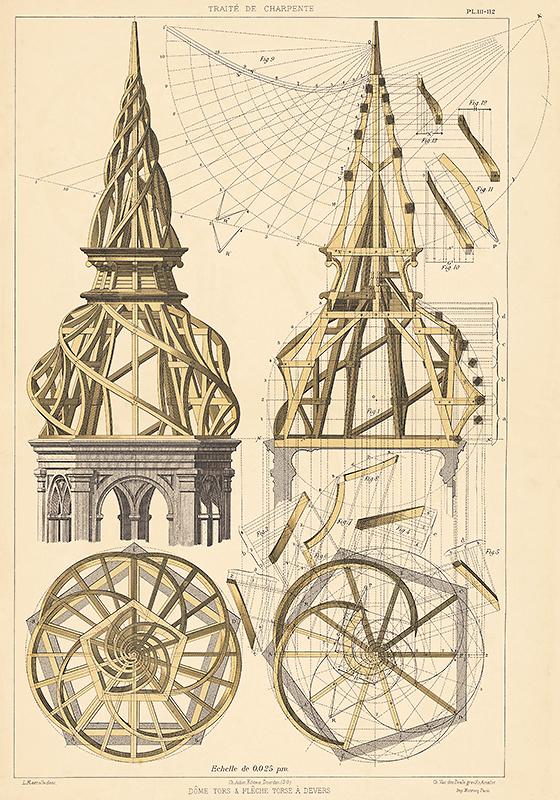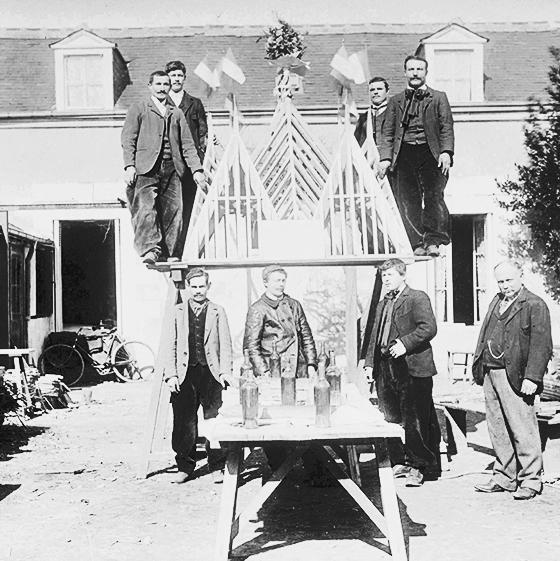Vocational improvement
One of the aims of the Compagnonnage is to ensure the coaching of young workers after they finish their apprenticeship. Dedication, new techniques, handskills, gathering and broadening basic knowledge to other fields are encouraged. Always strive to do better is the default attitude of the compagnons.
One of the aims of the Compagnonnage is to ensure the coaching of young workers after they finish their apprenticeship. Dedication, new techniques, handskills, gathering and broadening basic knowledge to other fields are encouraged. Always strive to do better is the default attitude of the compagnons.
Skill improvement is nowadays reached in three ways. Firstly, by working for stretches of a few months to a year in multiple workshops over diverse regions during a period of five, six or even ten years (this is the staple function of the Tour de France). Secondly, by attending training courses given outside working hours in the compagnons’ house in the town where they are stationed. Beyond specifics to the craft, the lessons can cover maths, French, foreign languages. Thirdly, by sitting through the examinations leading to various diplomas.
Up to the mid 19th century apprenticeship was four to six years long, at the end of which young men had already a solid knowledge of their craft. The Tour de France was an opportunity to widen that knowledge through the experience of working in a number of shops and building sites, but the desire for self-improvement was foremost.
In some building crafts they learned « le trait », a form of descriptive geometry applied to the marking of wood or stone prior to cutting intricate shapes. It enables one to solve on the two dimensions of paper problems that appear in three dimensions in reality. It is fundamental for stonemasons, who call it stereotomy, carpenters, and, to a lesser extent, joiners. It was taught by older compagnons and some of them ran schools that opened from autumn to spring, when shorter days made work on building-sites finish early. The most famous school of « trait » was the one that Pierre-François Guillon, compagnon carpenter du Devoir de Liberté, opened in Romanèche-Thorins (Saône-et-Loire) in 1871 and went on till 1923. It is now another museum of Compagnonnage.
As early as the beginning of the 20th century, the compagnons also took an interest in the training of apprentices, an activity they had previously considered outside their function. They set up ‘societies for the protection of apprentices’ (in Tours, Lyons, Villeneuve-sur-Lot, etc) with the view of helping them find the masters that would give them the best training. They also created vocational courses for them : those were the forerunners of the state’s Centres de Formation d’Apprentis that we have today.

Technical drawing of the carpentry work for a spiral steeple by Mazerolle, late 20thcentury.

Master and carpenter trainees at Tours around 1905-1906.
